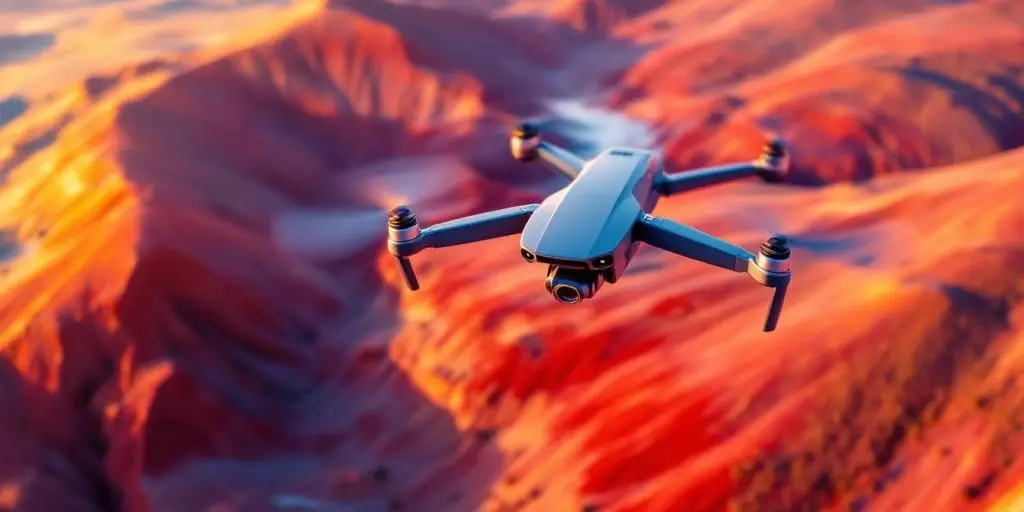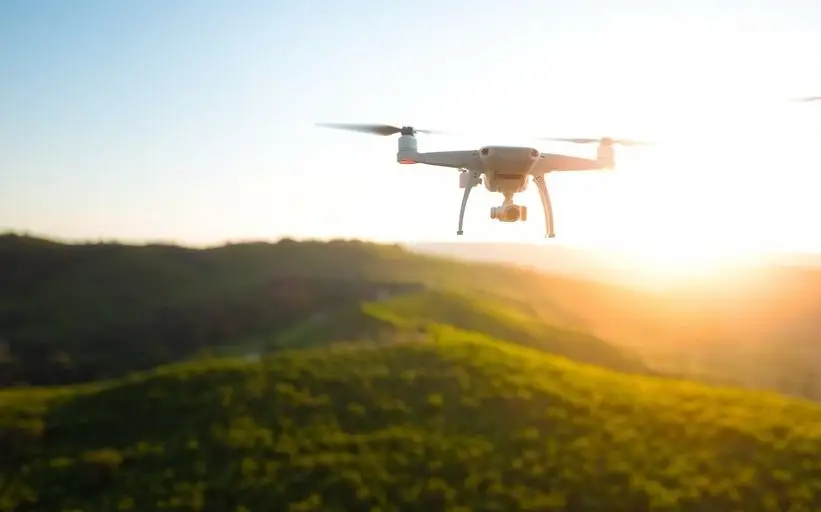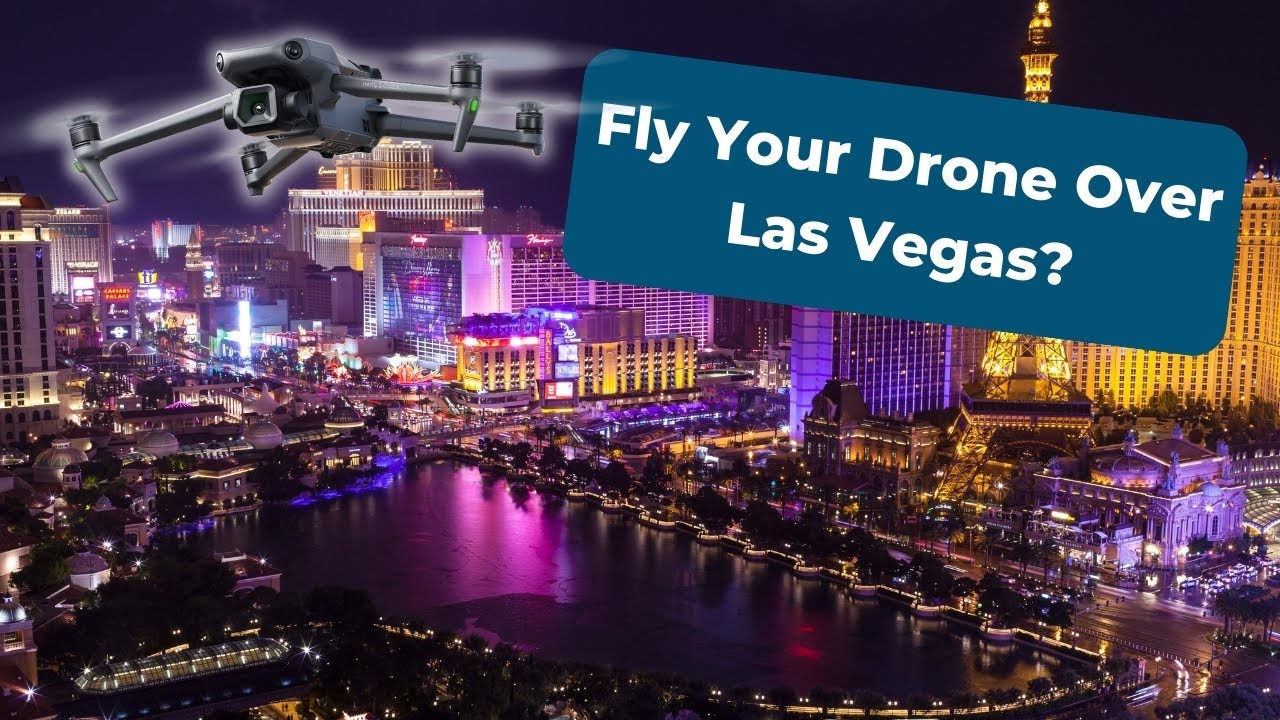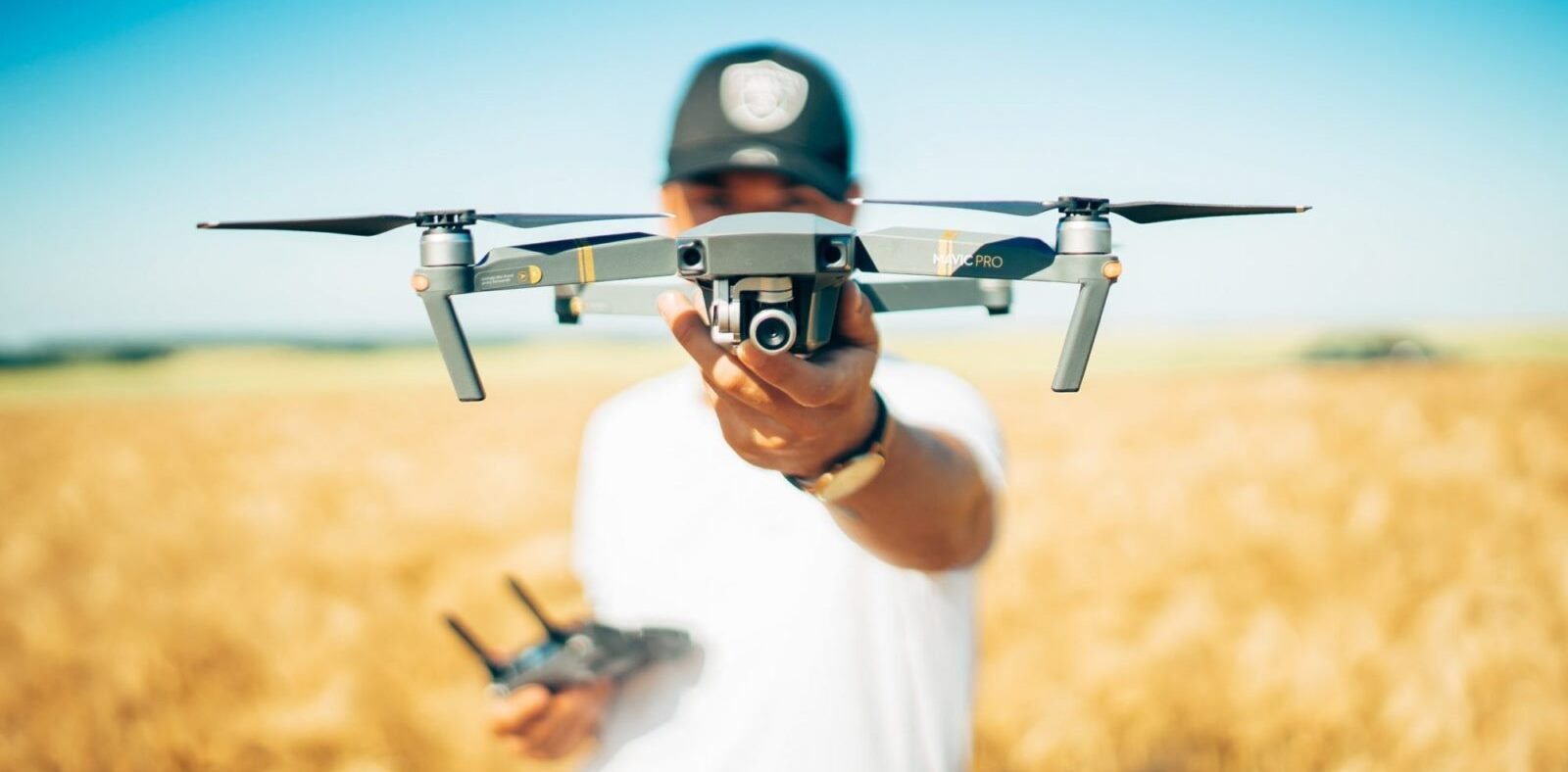
Behind the Scenes of Our Drone Operations. Drones have revolutionized our perception of the world, from delivering packages to aiding in emergencies. In this article, we will examine the operations involved in using drones. We will discuss the evolution of drone technology, the safety measures in place, and how drones are utilized today. Understanding these aspects provides us with a better understanding of the vital role drones play.
Key Takeaways
- Drones have evolved significantly from their early days, becoming smaller and more capable.
- Safety protocols are crucial for successful drone operations, including checks before, during, and after flights.
- Drones play a vital role in emergencies, aiding search and rescue operations, disaster response efforts, and delivering medical supplies.
- Understanding the technology behind drones, like navigation and communication systems, is essential for their operation.
- Regulations around drones are essential to address airspace use, privacy, and safety concerns.
The Evolution of Drone Operations
Historical Milestones in Drone Technology
Drones have undergone significant changes over the years. They started as big planes and are now small enough to fit in a backpack. One of the most essential early drones was the Gyrodyne QH-50, used during the Cold War. This drone was one of the first armed uncrewed aerial vehicles. Here are some critical milestones in drone history:
- 1917: The first drone, the Kettering Bug, was developed.
- In the 1960s, drones were used for reconnaissance during the Vietnam War.
- 2000s: Drones gained popularity for commercial applications, including photography and delivery.
Key Innovations in Modern Drones
Modern drones are equipped with advanced technology that makes them more efficient and versatile. Some key innovations include:
- High-resolution cameras for better imaging.
- GPS technology for precise navigation.
- Automated flight systems enable more straightforward operation.
| Feature | Description |
|---|---|
| Camera | High-resolution imaging capabilities |
| Navigation | GPS and advanced sensors |
| Automation | Remote operation and autonomous flight |
Future Trends in Drone Operations
The future of drone operations looks bright. Here are some trends to watch for:
- Increased automation: Drones will operate more independently.
- Integration with AI: Artificial intelligence will enhance decision-making.
- Expanded applications: Drones will be utilized in more fields, such as agriculture and emergency services.
The evolution of drone technology is not just about flying; it’s about making our lives easier and safer. As we look ahead, the possibilities are endless!
Safety Protocols in Drone Operations
Pre-Flight Safety Checks
Before any drone flight, it’s crucial to conduct thorough pre-flight safety checks. This ensures that the drone is ready for operation and helps prevent accidents. Here are some critical steps:
- Inspect the drone for any physical damage.
- Check battery levels to ensure sufficient power for the flight.
- Verify GPS functionality to ensure accurate navigation.
In-Flight Safety Measures
During the flight, operators must follow specific in-flight safety measures to maintain safety:
- Maintain a visual line of sight with the drone at all times.
- Avoid flying over crowds or populated areas to minimize risk.
- Monitor weather conditions to avoid flying in adverse weather.
Post-Flight Safety Procedures
After the flight, it’s essential to follow post-flight safety procedures to ensure everything is in order:
- Review flight data to assess performance and identify any issues.
- Charge batteries and store the drone properly.
- Report any incidents or malfunctions immediately.
Following these protocols is essential for safe drone operations. Safety is everyone’s responsibility, from operators to recreational flyers and community-based organizations.
By adhering to these safety protocols, we can help ensure that drone operations are both safe and effective, thereby protecting both operators and the public.
Drone Operations in Emergency Situations

Search and Rescue Missions
Drones play a crucial role in search and rescue missions. They can quickly cover large areas, providing real-time data to aid in locating missing persons. Here are some key benefits of using drones in these situations:
- Speed: Drones can be deployed rapidly, reducing response times.
- Accessibility: They can reach remote or hard-to-access areas.
- Data Collection: Drones can capture aerial images and thermal data to assist in locating individuals.
Disaster Response and Management
In the aftermath of disasters, drones are invaluable for assessing damage and coordinating relief efforts. They help in:
- Damage Assessment: Quickly surveying affected areas to understand the extent of destruction.
- Resource Allocation: Identifying where resources are needed most.
- Communication: Providing real-time updates to emergency response teams.
| Disaster Type | Drone Use | Outcome |
|---|---|---|
| Flooding | Aerial surveys | Quick damage assessment |
| Wildfires | Thermal imaging | Locate hotspots |
| Earthquakes | Mapping | Identify safe routes |
Medical Supply Deliveries
Drones are also used for delivering medical supplies in emergencies. They can transport essential items like:
- Medications: Delivering urgent prescriptions to remote areas.
- Vaccines: Ensuring timely distribution during outbreaks.
- Blood Supplies: Quickly transporting blood for transfusions.
Drones are transforming how emergency services operate, making them more efficient and effective. For emergency services operations, only the UAS or drone crew are considered participants, not the emergency response personnel. This distinction is crucial for coordination and safety.
By integrating drones into emergency operations, agencies can enhance their response capabilities and save lives.
Technological Components of Drone Operations

Drones comprise several vital components that enable them to fly and perform tasks. The main components of a drone include:
Navigation and Control Systems
- Flight Controller: This is the drone’s brain, which stabilizes and navigates it.
- GPS Module: It enables the drone to determine its location and follow a specific path.
- Sensors can include cameras and other devices that help the drone understand its surroundings.
Communication and Data Transmission
- Radio Transmitter/Receiver: The drone can communicate with the pilot via radio.
- Telemetry Systems: These systems send data back to the operator, including battery life and location information.
- Data Links: These are used to transmit video and other information from the drone to the ground station.
Power and Propulsion Systems
- Battery: Most drones use rechargeable batteries to power their motors.
- Motors and Propellers: These components are what enable the drone to fly. The motors spin the propellers, lifting the drone into the air.
- Charging Stations: Some drones can return to a specific spot to recharge automatically.
Drones have evolved significantly, with advanced systems that allow for better control and efficiency.
| Component Type | Description |
|---|---|
| Flight Controller | Stabilizes and navigates the drone |
| GPS Module | Provides location data |
| Radio Transmitter | Enables communication with the pilot |
| Battery | Powers the drone |
| Motors and Propellers | Lift the drone into the air |
Understanding these components helps us appreciate how drones operate and the technology behind them. Each part ensures that drones can perform their tasks effectively and safely.
Regulatory Challenges in Drone Operations
Airspace Regulations
Navigating the complex world of airspace regulations is crucial for safe and effective drone operations. Drones must comply with various rules set by aviation authorities. Here are some key points:
- Restricted Areas: Drones are prohibited from flying in specific zones, including areas near airports.
- Altitude Limits: There are maximum heights for drone flights to ensure safety and prevent collisions.
- Flight Permissions: Operators often need special permissions for specific missions.
Privacy and Security Concerns
As drone usage increases, so do worries about privacy and security. Drones can capture images and data, which can lead to potential misuse. Important considerations include:
- Data Protection: Ensuring that personal data collected by drones is secure.
- Public Awareness: Informing the public about drone operations in their area.
- Legal Frameworks: Establishing laws to protect citizens’ privacy. Compliance with International Standards
With drones operating globally, compliance with international standards is essential. This includes:
- Standardized Regulations: Countries need to agree on standard rules for drone operations.
- Safety Protocols: Implementing safety measures that meet international guidelines.
- Cross-Border Operations: Ensuring that drones can operate seamlessly across different countries.
The future of drone operations relies heavily on overcoming these regulatory challenges. Addressing these issues will help in the safe and efficient use of drones in various sectors.
In summary, as drone technology evolves, so must the regulations that govern it. Retailers have been experimenting with drone delivery operations for over a decade. However, regulatory challenges have slowed the adoption of this technology, and adapting to these challenges is crucial to unlocking the full potential of drone operations.
Environmental Impact of Drone Operations
Reducing Carbon Footprint
Drones can help reduce carbon emissions by optimizing various processes. For instance, they are used in agriculture to monitor crops, resulting in improved resource management. This means less fuel is consumed for transportation, and fewer emissions are released into the atmosphere. Here are some ways drones contribute:
- Precision Agriculture: Drones collect data that helps farmers use less water and fewer chemicals.
- Efficient Delivery: Drones can deliver goods directly to consumers, thereby reducing emissions from delivery trucks.
- Monitoring Wildlife: Drones can observe wildlife without disturbing their habitats, reducing the need for human presence.
Noise Pollution Management
While drones are generally quieter than traditional aircraft, they can still contribute to noise pollution. To manage this, companies are developing quieter drone technologies. Here are some strategies:
- Design Improvements: New designs focus on reducing noise during flight.
- Flight Path Optimization: Planning flight paths to avoid populated areas can minimize noise impact.
- Regulatory Compliance: Adhering to local noise regulations helps mitigate community concerns.
Wildlife and Habitat Considerations
Drones play a crucial role in monitoring ecosystems, but can also disturb wildlife. To mitigate this, operators must:
- Follow Guidelines: Adhere to regulations that protect wildlife.
- Conduct Surveys: Utilize drones to assess the impact on habitats before operations.
- Limit Flight Times: Avoid flying during sensitive periods, such as breeding seasons, to minimize disturbance to wildlife.
Drones are transforming how we interact with the environment, making it possible to gather data without causing significant disruption. Their potential to enhance efficiency while minimizing harm is a key factor in their growing use in various sectors.
Training and Certification for Drone Operators
Pilot Training Programs
To become a skilled drone operator, individuals must undergo comprehensive training. Here are some critical components of pilot training programs:
- Hands-on Flight Experience: Practical flying sessions to build confidence and skills.
- Theoretical Knowledge: Understanding drone mechanics, regulations, and safety protocols.
- Simulation Training: Using flight simulators to practice in various scenarios.
- Drone Safety Plan
Certification Requirements
To operate drones commercially, pilots need to obtain specific certifications. The most recognized is the Unmanned Aerial Systems certificate. This certification prepares individuals for the FAA Part 107 test, which is essential for legal drone operation. Here’s a brief overview of the certification process:
- Complete Training: Enroll in a certified training program to enhance your skills.
- Pass the FAA Exam: Complete the FAA Part 107 test.
- Obtain a Remote Pilot Certificate: Apply for the certificate through the Federal Aviation Administration (FAA).
Continuing Education and Skill Development
The drone industry is constantly evolving, making ongoing education vital. Operators should:
- Stay informed about new regulations and emerging technologies.
- Attend workshops and seminars.
- Engage in online courses to enhance your skills and knowledge.
Continuous learning is essential for maintaining safety and efficiency in drone operations. Investing in education ensures operators are prepared for the future.
Commercial Applications of Drone Operations

Drones are changing the way businesses operate across various industries. They offer innovative solutions that improve efficiency and reduce costs. Here are some key areas where drones are making a significant impact:
Agricultural Monitoring and Management
- Drones help farmers monitor crop health using high-resolution imagery.
- They can identify areas that need water or fertilizer and conserve resources.
- Farmers can use drones to plant seeds and spray pesticides.
Infrastructure Inspection and Maintenance
- Drones are used to inspect bridges, power lines, and buildings.
- They provide real-time data, making inspections faster and safer.
- Drones can reach difficult areas without putting workers at risk.
Delivery and Logistics Services
- Companies are exploring the use of drones for delivering packages, particularly in remote areas.
- Drones can transport medical supplies quickly during emergencies.
- Most notably, drone swarms have been used in the entertainment industry to create stunning light shows.
Drones are not just tools; they are transforming industries by making operations safer and more efficient. Their ability to gather data quickly and accurately is invaluable in today’s fast-paced world.
Conclusion
In conclusion, the world of drone operations is both exciting and complex. As we have seen, these flying machines are not just for fun; they are vital in various areas, including delivery, rescue missions, and environmental monitoring. Behind the scenes, a great deal of hard work ensures that these drones operate safely and efficiently. From testing their technology to managing air traffic, every detail matters. As drone technology continues to evolve, it will transform the way we live and work, making our lives easier and safer. The future looks bright for drones; we can’t wait to see what’s to come. ncan’tFrequently Asked Questions
What are drones used for today?
Drones are used for various purposes, including delivering packages, capturing aerial photographs, and assisting in emergencies.
How do drones stay safe while flying?
Drones undergo safety checks before they fly, follow rules while in the air, and check after they land to ensure everything is okay.
Can drones be used in emergencies?
Yes, drones can help find lost people, deliver medical supplies, and assist during natural disasters.
What technology do drones use to fly?
Drones use GPS for navigation, unique communication systems, and batteries for power.
Are there rules for flying drones?
Yes, there are laws governing where and how drones can fly to ensure everyone’s safety and protect privacy.
How do people learn to fly drones?
People can take training courses, get certified, and continue learning to improve their skills in flying drones.






Comments are closed.